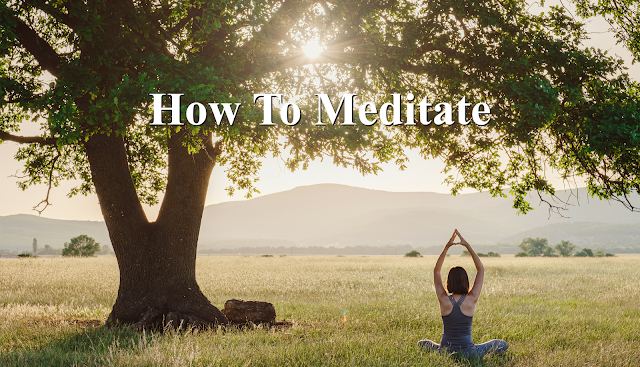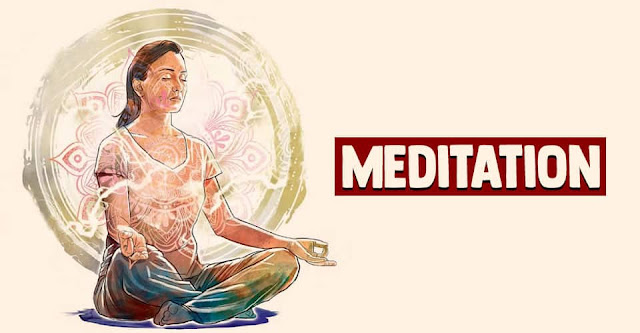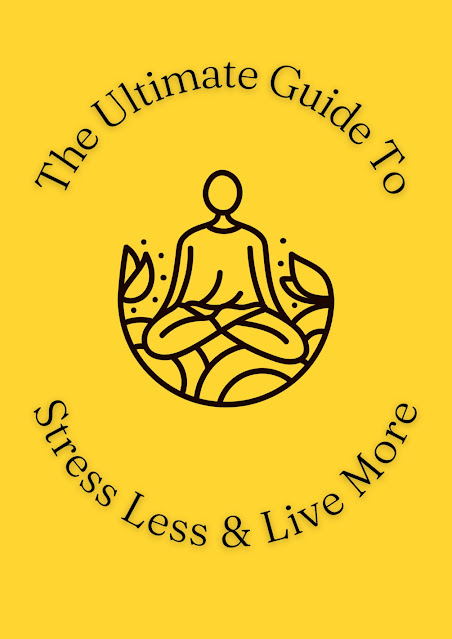The Benefits of Yoga: A Comprehensive Guide
Namaste,
Yoga, celebrated for its holistic approach to well-being, unfolds an array of transformative benefits that extend far beyond the physical realm. The benefits of yoga are multifaceted, nurturing the mind, body, and spirit in profound ways. From increased flexibility, strength, and balance to stress reduction, improved mental clarity, and enhanced overall vitality, yoga embodies a comprehensive approach to wellness. The practice of yoga is renowned for promoting relaxation, reducing anxiety, and fostering a sense of inner peace amidst life's challenges. Whether through mindful movement, breathwork, or meditation, the benefits of yoga ripple through every aspect of life, instilling a sense of harmony, resilience, and holistic wellness.
Discover the physical, mental, and emotional benefits of yoga. Learn how yoga can improve your flexibility, strength, and reduce stress in this ultimate guide.
Introduction
- Brief explanation of what yoga is
Yoga is a physical, mental, and spiritual practice that originated in ancient India around 5,000 years ago. It is said to have been developed by the Indus-Sarasvati civilization in the northern part of the Indian subcontinent, which was a highly advanced and sophisticated civilization that flourished from 3300 BCE to 1300 BCE. The earliest mention of the word “yoga” appears in the “Rig Veda”, a collection of ancient texts. The practice aims to create a union between body, mind, and spirit, as well as between the individual self and universal consciousness.
The word “yoga” comes from the Sanskrit word “yuj,” which means to unite or integrate. The practice of yoga aims to unite the mind, body, and spirit to create a sense of harmony and balance within oneself. The ancient Indian sage Patanjali is credited with writing the Yoga Sutras, a collection of 196 aphorisms that form the foundation of modern yoga philosophy.
Over the centuries, yoga has evolved and been influenced by different schools of thought and practices in India, including Hinduism, Buddhism, and Jainism. In the early 20th century, yoga began to gain popularity in the Western world, with figures like Swami Vivekananda and Paramahansa Yogananda introducing the practice to a wider audience.
Today, yoga is practiced all over the world and has many different forms and styles, including Hatha yoga, Vinyasa yoga, Ashtanga yoga, and Kundalini yoga. While the physical postures and breath control techniques are often emphasized in modern yoga, the practice still retains its roots in spirituality and self-awareness.
 |
| Benefits of Yoga |
- Importance of practicing yoga
Practicing yoga is not only a great way to stay in shape, but it also has numerous benefits for mental and emotional well-being. The physical practice of yoga involves various postures and movements that can improve flexibility, strength, balance, and cardiovascular health. This can help individuals stay fit and reduce the risk of chronic diseases such as heart disease, diabetes, and high blood pressure.
Beyond the physical benefits, yoga has been shown to have a positive impact on mental health. It can help reduce stress, anxiety, and depression, and improve overall mood and emotional well-being. The practice of yoga encourages individuals to be present in the moment and cultivate greater self-awareness and mindfulness, which can help reduce stress and increase overall well-being.
Yoga is also rooted in spiritual traditions and can help individuals connect with their inner selves and find greater meaning and purpose in life. The practice encourages individuals to let go of negative thoughts and emotions and embrace a sense of peace and contentment.
Practicing yoga in a group setting can also foster a sense of community and connection with others who share similar values and goals. This can help individuals feel supported and motivated to continue their yoga practice.
Incorporating yoga into your routine can lead to a more balanced, healthy, and fulfilling life. By taking care of your physical, mental, and emotional health, you can enhance your overall well-being and live life to the fullest.
- Scientific Thesis statement
Yoga has many benefits for both physical and mental health.
According to a study published in the Journal of Alternative and Complementary Medicine, practicing yoga for just 12 weeks was associated with significant improvements in flexibility, balance, and muscular strength ↂ.
Another study published in the European Journal of Preventive Cardiology found that yoga practice was associated with significant reductions in blood pressure, body mass index, and cholesterol levels, all of which are risk factors for cardiovascular disease ↂ.
A systematic review of 23 randomized controlled trials published in the Journal of Clinical Psychology found that yoga was an effective intervention for reducing symptoms of depression and anxiety ↂ.
A study published in the Journal of Alzheimer's Disease found that practicing yoga for 12 weeks was associated with improvements in cognitive function, particularly in executive function and processing speed, in adults with mild cognitive impairment ↂ.
Benefits of Yoga for Physical Health
- Improved flexibility and range of motion
Explanation of how yoga can increase flexibility
Yoga increases flexibility by gradually and safely stretching and lengthening muscles and connective tissues through various poses. The emphasis on proper alignment and posture helps maintain healthy joint mobility and prevent injury, while breathing techniques reduce tension and stress in the muscles. Overall, yoga can be an effective way to improve flexibility and mobility, making daily movements more comfortable and fluid.
Examples of yoga poses that improve flexibility
There are many yoga poses that can help improve flexibility in different parts of the body. Here are some examples of poses that can be effective for increasing flexibility:
- Adho Mukha Svanasana (Downward-facing Dog) - stretches the hamstrings, calves, and spine.
- Uttanasana (Standing Forward Bend) - stretches the hamstrings, calves, and lower back.
- Trikonasana (Triangle Pose) - stretches the hips, hamstrings, and spine.
- Bhujangasana (Cobra Pose) - stretches the chest, shoulders, and spine.
- Eka Pada Rajakapotasana (Pigeon Pose) - stretches the hips and thighs.
- Paschimottanasana (Seated Forward Bend) - stretches the hamstrings and lower back.
- Baddha Konasana (Butterfly Pose) - stretches the inner thighs and hips.
- Gomukhasana (Cow Face Pose) - stretches the hips, thighs, and shoulders
It's important to remember that everyone's body is different, and what works for one person may not work for another. It's also important to practice yoga safely and with proper alignment, so it may be helpful to take a class or work with a teacher to ensure that you are practicing poses correctly and safely.
- Increased strength and muscle tone
Explanation of how yoga can strengthen muscles
Yoga can strengthen muscles through the use of the body's own weight and resistance, along with isometric and eccentric contractions. Holding yoga poses for an extended period of time can build strength and endurance, while increased body awareness and alignment can improve muscle activation during daily activities. Overall, incorporating yoga into your fitness routine can be an effective way to improve muscle strength and tone.
Examples of yoga poses that improve strength
Yoga can be an effective way to build strength and endurance throughout the body. Here are some examples of yoga poses that can help improve strength:
- Plank Pose (Phalakasana) - strengthens the core muscles, arms, and wrists.
- Utkatasana (Chair Pose) - strengthens the thighs and glutes.
- Virabhadrasana (Warrior Pose) - strengthens the legs, hips, and core muscles.
- Ardha Pincha Mayurasana (Dolphin Pose) - strengthens the arms, shoulders, and core muscles.
- Chaturanga Dandasana (Four-Limbed Staff Pose) - strengthens the arms, shoulders, and core muscles.
- Setu Bandhasana (Bridge Pose) - strengthens the glutes and lower back.
- Urdhva Mukha Svanasana (Upward-Facing Dog Pose) - strengthens the arms, shoulders, and upper back.
- Tree Pose (Vrikshasana) - strengthens the legs, hips, and core muscles.
Remember to practice these poses safely and with proper alignment, and to listen to your body and modify the poses as needed. It's also important to incorporate a variety of poses and focus on full-body strength training for maximum benefits.
- Better cardiovascular health
Explanation of how yoga can improve cardiovascular health
Yoga can improve cardiovascular health by reducing risk factors such as high blood pressure and stress, increasing physical activity levels, and promoting relaxation through activation of the parasympathetic nervous system. Practicing yoga regularly can also improve overall mental health, reducing the risk of heart disease associated with chronic stress.
Examples of yoga poses that benefit the heart
Practicing yoga regularly can have a positive impact on cardiovascular health by reducing stress, improving circulation, and increasing physical activity levels. Here are some yoga poses that can specifically benefit the heart:
- Tadasana (Mountain Pose) - promotes good posture and helps regulate heart rate.
- Surya Namaskar (Sun Salutations) - a sequence of poses that can elevate heart rate and increase cardiovascular endurance.
- Virabhadrasana (Warrior Pose) - strengthens the heart muscles and improves circulation.
- Setu Bandhasana (Bridge Pose) - helps regulate blood pressure and strengthens the heart muscles.
- Ustrasana (Camel Pose) - improves circulation and stretches the chest and heart muscles.
- Matsyasana (Fish Pose) - expands the chest and improves circulation to the heart.
- Shavasana (Corpse Pose ) - promotes relaxation and reduces stress levels, which can benefit overall cardiovascular health.
Remember to always practice yoga safely and listen to your body. If you have any pre-existing medical conditions, be sure to consult with your healthcare provider before starting a new exercise program.
 |
| Yoga Wellness |
Benefits of Yoga for Mental Health
- Reduced stress and anxiety
Explanation of how yoga can reduce stress and anxiety
Scientific research supports the effectiveness of yoga in reducing stress and anxiety. Yoga's physical postures, breathing techniques, and meditation activate the parasympathetic nervous system, reduce cortisol levels, and improve mood and overall mental health. Regular yoga practice can lead to lower blood pressure and heart rate, reduced muscle tension, and a feeling of calmness.
Examples of yoga practices that help with stress and anxiety
Some examples of yoga practices that help with stress and anxiety include:
- Pranayama: A breathing technique that involves slow, deep breathing, which can help to calm the mind and reduce anxiety.
- Shavasana: A pose where you lie on your back and relax every muscle in your body, this helps to release physical and mental tension.
- Yoga Nidra: A guided meditation technique that promotes relaxation and reduces anxiety by increasing self-awareness and reducing negative thoughts.
- Viparita Karani: Also known as the Legs-up-the-wall pose, it helps to reduce anxiety by promoting relaxation and reducing tension in the body.
- Balasana: Child's pose, it can help to calm the mind and reduce stress by promoting deep breathing and relaxation.
- Adho Mukha Svanasana: The downward-Facing Dog pose, it can help to relieve tension in the shoulders, neck and back, helping to reduce stress and anxiety.
Overall, there are many different yoga practices that can be helpful in reducing stress and anxiety. It's important to find the ones that work best for you and incorporate them into your regular practice.
- Improved mood and emotional well-being
Explanation of how yoga can improve mood and emotional well-being
Yoga can improve mood and emotional well-being by increasing the production of hormones associated with pleasure and well-being, regulating the autonomic nervous system, and promoting self-awareness, acceptance, and compassion. Regular yoga practice has been found to reduce symptoms of depression, anxiety, and stress while improving overall quality of life and emotional well-being.
Examples of yoga practices that help with emotional well-being
Some examples of yoga practices that help with emotional well-being include:
- Anjali Mudra: A hand gesture that involves pressing the palms together in front of the heart, it can help to promote feelings of calm and connection.
- Bhramari Pranayama: Also known as humming bee breath, it can help to soothe the nervous system and promote relaxation.
- Vipassana Meditation: A mindfulness-based meditation practice that helps to cultivate awareness and acceptance of present-moment experiences, reducing anxiety and promoting emotional well-being.
- Ardha Chandrasana: Half moon pose, it can help to increase energy levels and promote a sense of inner balance.
- Urdhva Mukha Svanasana: Upward-facing dog pose, it can help to increase confidence and self-esteem, while also promoting feelings of openness and positivity.
Overall, these yoga practices can help to promote emotional well-being by reducing stress, increasing self-awareness and acceptance, and promoting positive emotions and feelings of connection.
- Increased mindfulness and self-awareness
Explanation of how yoga can increase mindfulness and self-awareness
Yoga can increase mindfulness and self-awareness by promoting present-moment awareness, developing a deeper understanding of the mind-body connection, and cultivating self-compassion and acceptance. Through physical postures, breathing exercises, and meditation, individuals become more attuned to their bodies and the sensations they experience, leading to increased self-awareness and emotional well-being.
Examples of yoga practices that help with mindfulness and self-awareness
Some examples of yoga practices that can help with mindfulness and self-awareness include:
- Pranayama: This is a breathing technique that involves slow, deep breathing to calm the mind and increase awareness of the breath.
- Yoga Nidra: This is a form of guided meditation that involves deep relaxation and visualization, and can help individuals become more aware of their thoughts and emotions.
- Sun Salutations: This is a series of yoga postures that are performed in a sequence, and can help individuals to develop a deeper mind-body connection.
- Mindful Meditation: This involves focusing on a specific object, sensation, or thought, and can help individuals to cultivate a sense of mindfulness and present-moment awareness.
- Yin Yoga: This is a slow, meditative form of yoga that involves holding poses for longer periods of time, and can help individuals to develop a deeper understanding of their bodies and emotions.
Benefits of Yoga for Emotional Health
Explanation of how yoga can improve sleep quality
Yoga can improve sleep quality by reducing stress and anxiety, promoting relaxation, and improving physical comfort. The physical postures, breathing exercises, and meditation techniques practiced in yoga can help to calm the mind and release tension from the body, leading to improved sleep quality. Yoga can also improve circulation and ease pain and discomfort in the body, which can contribute to a more restful night's sleep. Furthermore, regular practice of yoga has been shown to regulate the body's circadian rhythm, leading to improved sleep-wake cycles.
Examples of yoga practices that promote better sleep
Here are some examples of yoga practices that promote better sleep:
- Restorative yoga: This is a gentle form of yoga that uses props to support the body in various postures for extended periods of time. It helps to release tension and promote relaxation in the body.
- Yoga Nidra: This is a type of guided meditation that promotes deep relaxation and can help to reduce stress and anxiety.
- Forward folds: Poses such as uttanasana (standing forward bend) and paschimottanasana (seated forward bend) can help to calm the mind and release tension in the body, making them great for promoting better sleep.
- Legs up the wall: This pose involves lying on the floor with the legs resting up against a wall. It can help to reduce swelling in the legs, promote circulation, and relax the body.
- Pranayama: Breathing exercises such as alternate nostril breathing or diaphragmatic breathing can help to calm the mind and promote relaxation, making them great for improving sleep quality.
- Reduced symptoms of depression
Explanation of how yoga can reduce symptoms of depression
Yoga can reduce symptoms of depression by helping to regulate the body's stress response and increasing the production of mood-boosting neurotransmitters such as serotonin and dopamine. Yoga also helps to improve circulation and promote relaxation in the body, which can reduce feelings of anxiety and promote a sense of calm. Additionally, yoga can increase self-awareness and mindfulness, helping individuals to better understand and manage their emotions. Regular practice of yoga has been shown to improve overall mood and reduce symptoms of depression, making it a valuable tool in the treatment of this condition.
Examples of yoga practices that help with depression
Here are some examples of yoga practices that can help with depression:
- Sun salutations: This sequence of poses is often used as a warm-up for a yoga practice and can help to energize the body and improve mood.
- Backbends: Poses such as camel pose and bridge pose can help to open the chest and increase circulation, which can improve mood and reduce feelings of anxiety.
- Inversions: Poses such as headstand or shoulder stand can help to stimulate the thyroid gland, which is important for regulating mood and energy levels.
- Restorative yoga: This gentle form of yoga involves holding poses for extended periods of time with the help of props, promoting relaxation and reducing stress.
- Pranayama: Breathing exercises such as kapalabhati or bhastrika can help to increase oxygenation in the body and improve mood.
It is important to note that yoga should not be used as a replacement for professional medical treatment for depression. However, it can be a helpful adjunct therapy for managing symptoms and improving overall well-being.
- Enhanced overall well-being
Explanation of how yoga can enhance overall well-being
Yoga is a holistic practice that enhances overall well-being by improving physical health, promoting mental health, and offering spiritual benefits. The combination of physical movement, breathing techniques, and meditation reduces stress and anxiety, improves mood, increases flexibility, strength, balance, cardiovascular health, and enhances self-awareness and mindfulness, leading to greater emotional well-being and resilience. Yoga connects individuals to a sense of purpose, meaning, and inner peace, offering a powerful tool for improving the quality of life.
Examples of yoga practices that contribute to overall well-being
There are many yoga practices that contribute to overall well-being. Some examples include:
- Hatha Yoga: This style of yoga focuses on physical postures and breathing techniques to improve strength, flexibility, and balance.
- Vinyasa Yoga: This style of yoga emphasizes flowing movements and synchronized breathing, creating a moving meditation.
- Restorative Yoga: This style of yoga is focused on relaxation and rejuvenation, using props to support the body in passive poses that promote deep relaxation.
- Yoga Nidra: This is a guided meditation practice that helps individuals enter a deep state of relaxation and self-awareness.
- Pranayama: This practice involves different breathing techniques that can help reduce stress, anxiety, and promote relaxation.
- Meditation: Yoga includes various meditation practices, such as mindfulness meditation, loving-kindness meditation, and visualization meditation, all of which can promote mental and emotional well-being.
By incorporating these practices into a regular yoga routine, individuals can improve their overall well-being and lead a more fulfilling life.
 |
| Yoga Guide |
Conclusion
Yoga offers numerous benefits for physical, mental, and emotional well-being. It can improve flexibility, strength, cardiovascular health, reduce stress and anxiety, enhance mood and emotional well-being, increase mindfulness and self-awareness, promote better sleep, reduce symptoms of depression, and contribute to overall well-being. By incorporating regular yoga practice into one's lifestyle, individuals can experience these benefits and improve their overall quality of life.
If you haven't tried yoga yet, it's never too late to start! Incorporating yoga practice into your daily routine can offer numerous benefits for your physical, mental, and emotional well-being. Whether you're a beginner or an experienced practitioner, there are a variety of yoga styles and practices to suit your needs and preferences. So, take the first step towards a healthier, happier you and give yoga a try! You might be surprised at how much it can positively impact your life.
In conclusion, the importance of yoga for physical, mental, and emotional health cannot be overstated. Yoga is a holistic practice that can help individuals achieve balance in all aspects of their well-being. The physical benefits of yoga, such as improved flexibility, strength, and cardiovascular health, are well-documented. But, the mental and emotional benefits of yoga are equally as important, including reducing stress and anxiety, enhancing mood and emotional well-being, increasing mindfulness and self-awareness, promoting better sleep, and reducing symptoms of depression.
Yoga is not just a form of exercise, but a way of life that encourages individuals to cultivate a deeper connection with themselves and the world around them. By incorporating regular yoga practice into their lifestyle, individuals can experience profound transformations in their physical, mental, and emotional health, leading to a more fulfilling and meaningful life.
So, if you're looking to improve your overall well-being, consider giving yoga a try. With the right guidance and practice, you might just find that yoga is the missing piece you've been looking for to achieve a healthier, happier, and more balanced life.














.jpg)


